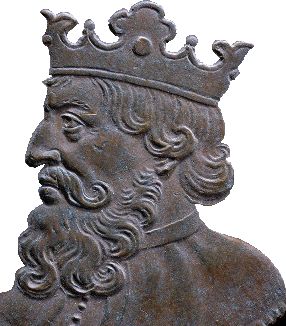The 610s decade ran from January 1, 610, to December 31, 619.

Year 604 (DCIV) was a leap year starting on Wednesday of the Julian calendar. The denomination 604 for this year has been used since the early medieval period, when the Anno Domini calendar era became the prevalent method in Europe for naming years.
The 650s decade ran from January 1, 650, to December 31, 659.
The 670s decade ran from January 1, 670, to December 31, 679.
The 560s decade ran from January 1, 560, to December 31, 569.
The 580s decade ran from January 1, 580, to December 31, 589.
The 590s decade ran from January 1, 590, to December 31, 599.

Year 584 (DLXXXIV) was a leap year starting on Saturday of the Julian calendar. The denomination 584 for this year has been used since the early medieval period, when the Anno Domini calendar era became the prevalent method in Europe for naming years.

Year 675 (DCLXXV) was a common year starting on Monday of the Julian calendar. The denomination 675 for this year has been used since the early medieval period, when the Anno Domini calendar era became the prevalent method in Europe for naming years.

Austrasia was the northeastern kingdom within the core of the Frankish Empire during the Early Middle Ages, centring on the Meuse, Middle Rhine and the Moselle rivers. It included the original Frankish-ruled territories within what had been the northernmost part of Roman Gaul, and cities such as Cologne, Trier and Metz. It also stretched beyond the old Roman borders on the Rhine into Frankish areas which had never been formally under Roman rule. It came into being as a part of the Frankish Empire founded by Clovis I (481–511). At the same time, the initial powerbase of Clovis himself was the more Romanized part of northern Gaul, lying southwest of Austrasia, which came to be known as Neustria.

Chlothar II, sometimes called "the Young", was king of the Franks, ruling Neustria (584–629), Burgundy (613–629) and Austrasia (613–623).

Neustria was the western part of the Kingdom of the Franks during the Early Middle Ages, in contrast to the eastern Frankish kingdom, Austrasia. It initially included land between the Loire and the Silva Carbonaria, in the north of present-day France, with Paris, Orléans, Tours, Soissons as its main cities.

Chilperic I was the king of Neustria from 561 to his death. He was one of the sons of the Frankish king Clotaire I and Queen Aregund.

The Kingdom of the Franks, also known as the Frankish Kingdom, the Frankish Empire or Francia, was the largest post-Roman barbarian kingdom in Western Europe. It was ruled by the Frankish Merovingian and Carolingian dynasties during the Early Middle Ages. Francia was among the last surviving Germanic kingdoms from the Migration Period era.

Galswintha (540–568) was a queen consort of Neustria. She was the daughter of Athanagild, Visigothic king of Hispania, and Goiswintha. Galswintha was the sister of Brunhilda—queen consort of Austrasia—and the wife of Chilperic I, the Merovingian king of Neustria. Galswintha was probably murdered at the urging of Chilperic's former concubine Fredegund, instigating a 40-year civil war within the Merovingian kingdom.
Fredegund or Fredegunda was the queen consort of Chilperic I, the Merovingian Frankish king of Neustria. Fredegund served as regent during the minority of her son Chlothar II from 584 until 597.
Brunhilda was queen consort of Austrasia, part of Francia, by marriage to the Merovingian king Sigebert I of Austrasia, and regent for her son, grandson and great-grandson.
Liber Historiae Francorum is a chronicle written anonymously during the 8th century. The first sections served as a secondary source for early Franks in the time of Marcomer, giving a short breviarum of events until the time of the late Merovingians. The subsequent sections of the chronicle are important primary sources for the contemporaneous history. They provide an account of the Pippinid family in Austrasia before they became the most famous Carolingians.
The 600s decade ran from January 1, 600, to December 31, 609.









